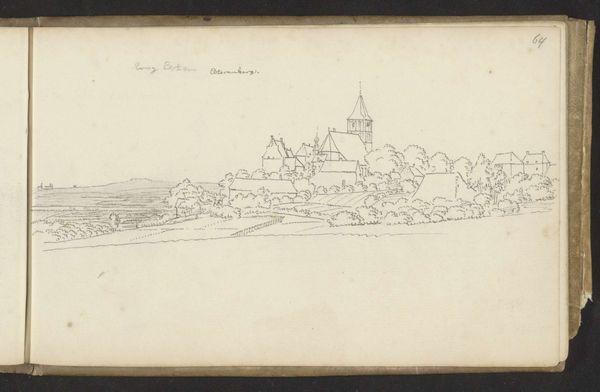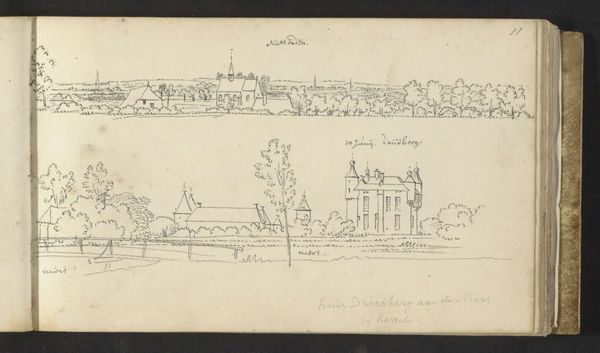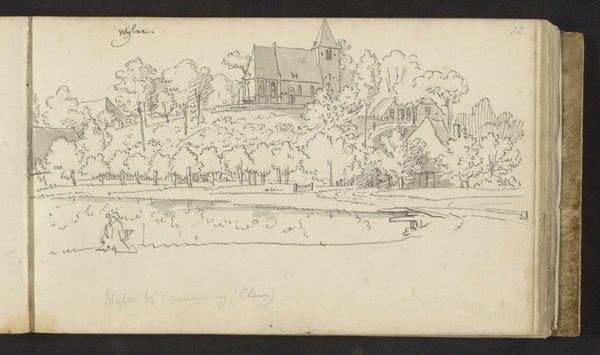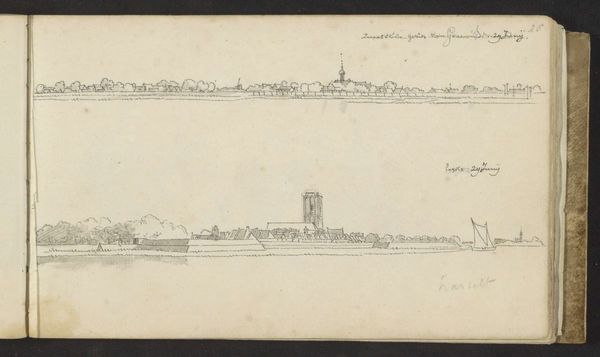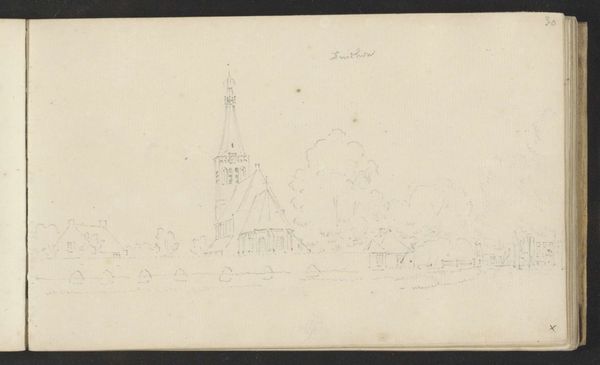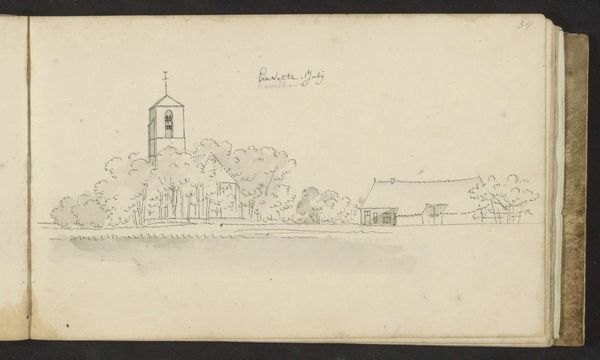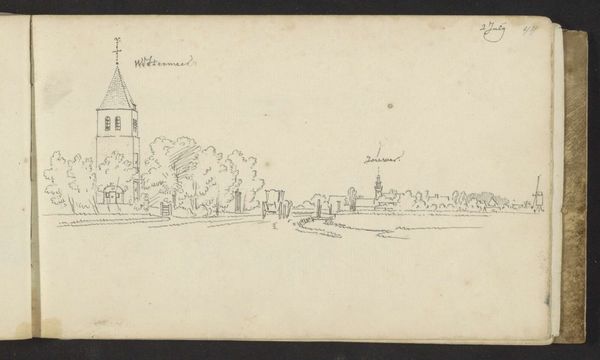
drawing, pencil
#
drawing
#
aged paper
#
toned paper
#
quirky sketch
#
dutch-golden-age
#
sketch book
#
landscape
#
form
#
personal sketchbook
#
pen-ink sketch
#
pencil
#
line
#
pen work
#
sketchbook drawing
#
cityscape
#
storyboard and sketchbook work
#
sketchbook art
Copyright: Rijks Museum: Open Domain
Abraham de Haen II made this pencil drawing entitled 'Gezichten op Laag Elten en Borghees' sometime in the first half of the 18th century. De Haen was born in Amsterdam and died in The Hague. In this drawing, de Haen presents his audience with two landscapes of the same region of the Netherlands, each representing a particular area of land. Notice how the high vantage point and the use of linear perspective in the lower picture are visual codes that give the impression of control. The churches and village buildings represented here are symbols of established order. To understand this drawing better, we might research the local histories and archives of Elten and Borghees. This might tell us something about the relationship between the artist, the church, and other powerful institutions within the local social structure. Such research shows how art is always a product of its time, a reflection of the social conditions and institutional forces that shape its creation and interpretation.
Comments
No comments
Be the first to comment and join the conversation on the ultimate creative platform.
